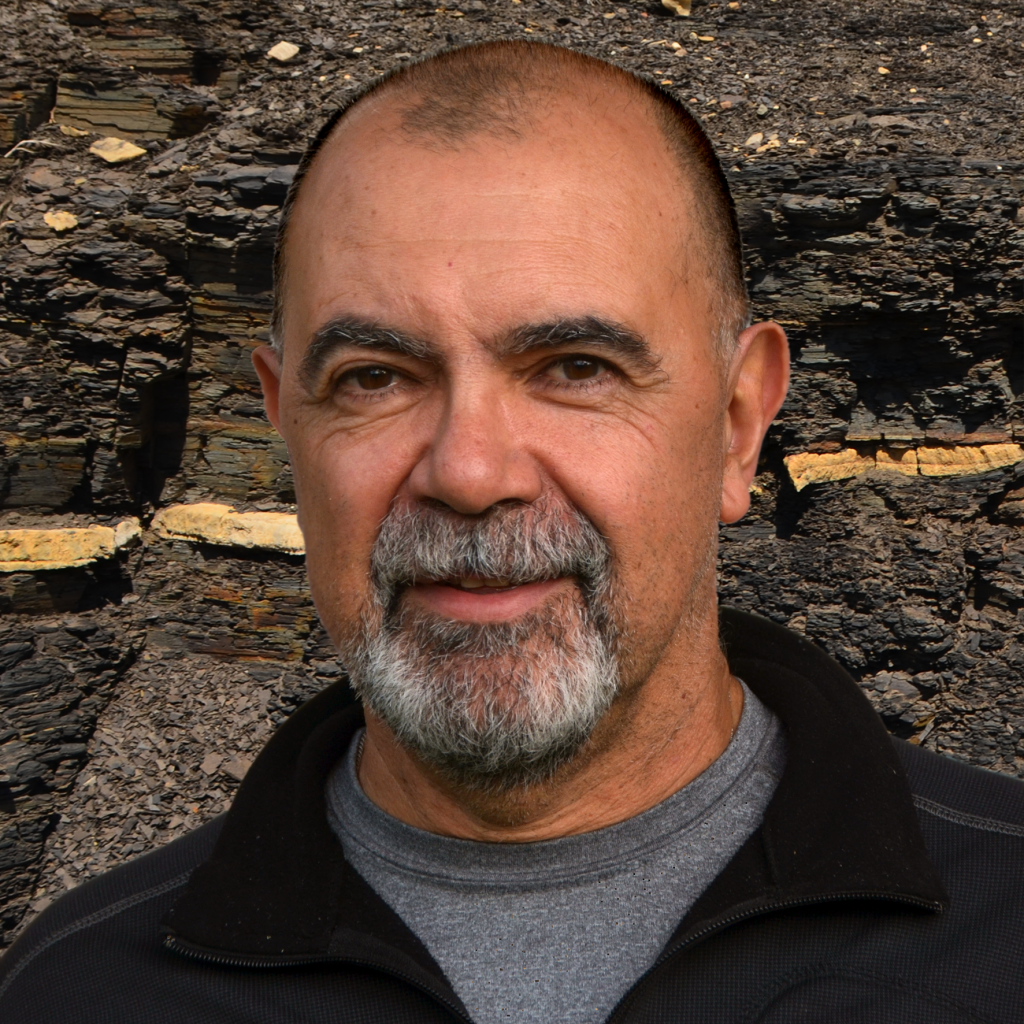Predictive Sedimentology Neuquen Basin
2022
November
14 to 19
Leader
Professor Carlos Zavala

Professor Carlos Zavala is geologist (1987), with a Ph.D. (1993) in stratigraphy and clastic sedimentary environments. During 1994-1996 he moved to Italy to perform a specialization in turbidites with Prof. Emiliano Mutti. He has conducted numerous research and technical studies in clastic sedimentary deposits from the Proterozoic through the Holocene in several depositional basins of Argentina, Italy, Spain, Mexico, Brazil, Colombia, Venezuela, Trinidad & Tobago, China, Russia and Oman. His main contributions refer to different aspects of sedimentology and stratigraphy of ancient clastic depositional environments, with emphasis in sediment gravity flow and hyperpycnal deposits in shallow to deep waters. He authored 216 scientific papers and abstracts published in both domestic and international journals. For more than 25 years, Prof. Zavala has been conducting training courses for the academia and the industry. At present he is Professor at the Universidad Nacional del Sur (Argentina) and the leader of GCS ARGENTINA SRL, a company aimed in providing high quality research and consulting services to the oil industry.
face-to-face
Interpretation and discussions against the outcrops, theoretical master classes responding to the problems raised.
Price
1800 USD + tax (Single attendant). Please ask for corporative prices
This price includes:
- Transfer service from Nequen airport, places to visit and return to Neuquen airport
- Field guide and theory guide
- Premium lunches in the field
Ask for our corporate prices
Registration
To register and learn about our payment methods, write to: info@immersivegeology.com
The prospection and development of clastic reservoirs requires a deep understanding of several new concepts of sedimentology and depositional systems. However, the analysis of the Petroleum System frequently overlooks the crucial importance of the geometry, continuity, connectivity and diagenesis of the reservoir, probably because they are based on obsolete/out of scale sedimentological models when compared with the high resolution provided by 3D seismic and well logs. As a consequence, great investments are commonly wasted because of an unappropriated estimation of reservoir risks. In the case of unconventional reservoirs, completion and stimulation techniques are not always applied properly due to a limited understanding of the internal complexity of shale deposits. The origin and internal stacking of shale deposits have been oversimplified for years with dramatic consequences in oil exploration.
During the last few decades there has been a truly scientific revolution that set in crisis the validity of most of the classical sedimentological models for clastic reservoirs. Growing evidences revealed that most of the existing traditional depositional models found in the literature are extremely basic and simplified, and almost none of them have a correspondence with the real world of clastic reservoirs.
The amazing outcrops available in the Neuquén Basin gives a great opportunity to study at least twenty different clastic depositional systems with a huge variety of sub-environments, ranging from continental to marginal marine, shelfal and inner basin. In order to provide an update of the main concepts applied to the understanding of clastic depositional systems and their related reservoirs (conventional-unconventional), a series of lectures complemented with excellent field examples will be conducted during this course. The course program comprises five days of theory (morning) complemented with field trips (afternoon) visiting some of the best outcrop examples of Jurassic and Cretaceous reservoirs of the Neuquen Basin.
Each participant will receive detailed color guides (paper and digital)
The Predictive Sedimentology course applied to Reservoirs is aimed at geologists, geological engineers, geophysicists and paleontologists, and tries to provide theoretical support and basic tools to enable the reinterpretation of problematic reservoirs, since it proposes more than a facies model, a method of reasoning applicable to different basins.
Day 1
5:00 p.m. Departure from Neuquén (airport) to Zapala city
7:00 p.m. Accommodation at the Hue Melen Hotel
20 hrs. Theory at the Conference Room
Introduction. General concepts. General description of the basin. Configuration, infill and evolution of the Neuquén Basin. Discussion of recent advances in the knowledge of the basin stratigraphy. Field guides.
Day 2
8:30 – 11:00 Theory in the Conference Room
Introduction to the analysis of hyperpycnal systems. Origin of ideas. The actualism in the facies analysis. The concept of energy barrier. Preservation of depositional systems. Geomorphological environments and depositional environments. Fuvio-deltaic sedimentation. Littoral deltas. Hypo and hyperpycnal systems. Descriptive vs. Genetic facies. Main types of facies related to hyperpycnal systems.
11:00 – 19:00. Field trip
Analysis and discussion of the main outcrops of the Los Molles Formation south of the Huincul Arch. Overview of the Cuyo Group in the Ñireco area. Lofting rhythmites in the Los Molles Formation, interaction with sandy hyperpicnites. Topographic control in the accumulation of sandy lobes.
15:00 Lunch at the Catan Lil River
Sandy lobes in the Los Molles Formation. Auto and allocyclic controls in cyclicity. Facies and predictive analysis in hyperpycnal lobes. The origin of thick shale accumulations and shale oil/gas.
Day 3
8:30 – 11:00 Theory at the Conference Room
Facies tracts of hyperpycnal systems. Tractive and traction-plus-fallout bedforms. Main sedimentary structures. Bed load and suspended load. Facies B and S. Diagnostic elements. Examples from field and subsurface. Flow fluctuations. Internal erosional surfaces. Significance and importance of lofting deposits. Lofting rhythmites. Composite beds. Cascadites. Differentiation criteria between conventional turbidites, hyperpicnites and cascadites. Intra and extrabasinal turbidites. Differentiation criteria. Hyperpicnites and the shale oil/gas.
11:00 – 19:00 Field trip
Anomalous thick lobes related to long-duration hyperpycnal flows in the Lotena Fm. Evidence of Jurassic tectonic activity outside the Huincul Arch and its control in the stratigraphy. Compressive growing structures during the accumulation of Grupo Cuyo. Lystric distensive structures at the base of the Lotena Group. Coarse-grained hyperpicnites in the Lajas Fm. Origin of cyclicity.
15:30 Lunch at Covunco Creek
Bed load facies related to hyperpycnal flows in the Tordillo Fm. Evidence of dissolution (karstification) in the limestone roof of the La Manga Formation. Oxfordian tectonic activity in the Sierra de la Vaca Muerta area.
Day 4
8:30 – 11:00 Theory in the Conference Room
Case study: Facies prediction by applying genetic index analysis. Data analysis. Proximity and laterality indices. Oil meaning. Facies prediction maps and reservoir quality.
11:00 – 19:00 Field departure (Check out from Hotel)
Departure to Loncopue. Facies analysis in the Rayoso Fm. Lacustrine hyperpicnites. Origin of cyclicity.
15:30 Lunch at the Agrio River
The Mulichinco Fm at the Rio Salado. Facies analysis and discussion. Facies prediction. The Avilé Member at Chorriaca. Facies analysis.
Check in Hotel Terra Malal (Chos Malal)
Day 5
8:30 – 11:00 Theory at the Conference Room
Case study: Reinterpretation of facies and depositional model, exploratory consequences of a new paradigm. Study cases. Application of new paradigms in the exploration of hydrocarbons in deep water.
11:00 – 19:00 Field trip
Analysis of the Chacay Melehue section. Sandy lobes related to long-lasting hyperpycnal flows in Los Molles Fm. Facies analysis. Main characteristics and meaning of lofting rhythmites
14:30 Lunch at Chos Malal
Bituminous levels of the Vaca Muerta Fm in Vega de la Veranada section. Discussion about the origin of oil shales and their importance for shale gas. Facies analysis in the Mulichinco Fm. Bituminous levels at the base of the Agrio Fm.
Day 6
8:30 – 17:30 Field trip
Wave-dominated deltaic systems in the Mulichinco Formation. Bituminous levels in the Agrio Fm. Sandy layers of anomalous thickness in the Agrio Formation (Capas de San Eduardo) in the Mina San Eduardo area. Origin and significance of the deposits. Possible structural control in the location of sandy reservoirs of the Agrio Fm.
Lunch on the Neuquén River
Lacustrine, fluvial and aeolian deposits of the Avilé Member. Facies analysis and differentiation criteria between the different facies. Meaning of the internal organization of the elementary sequences.
Return to Neuquén (via Añelo)
